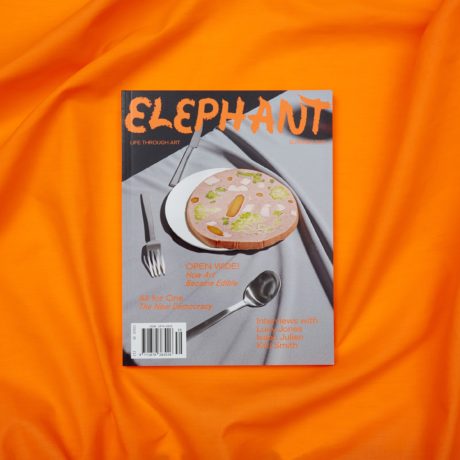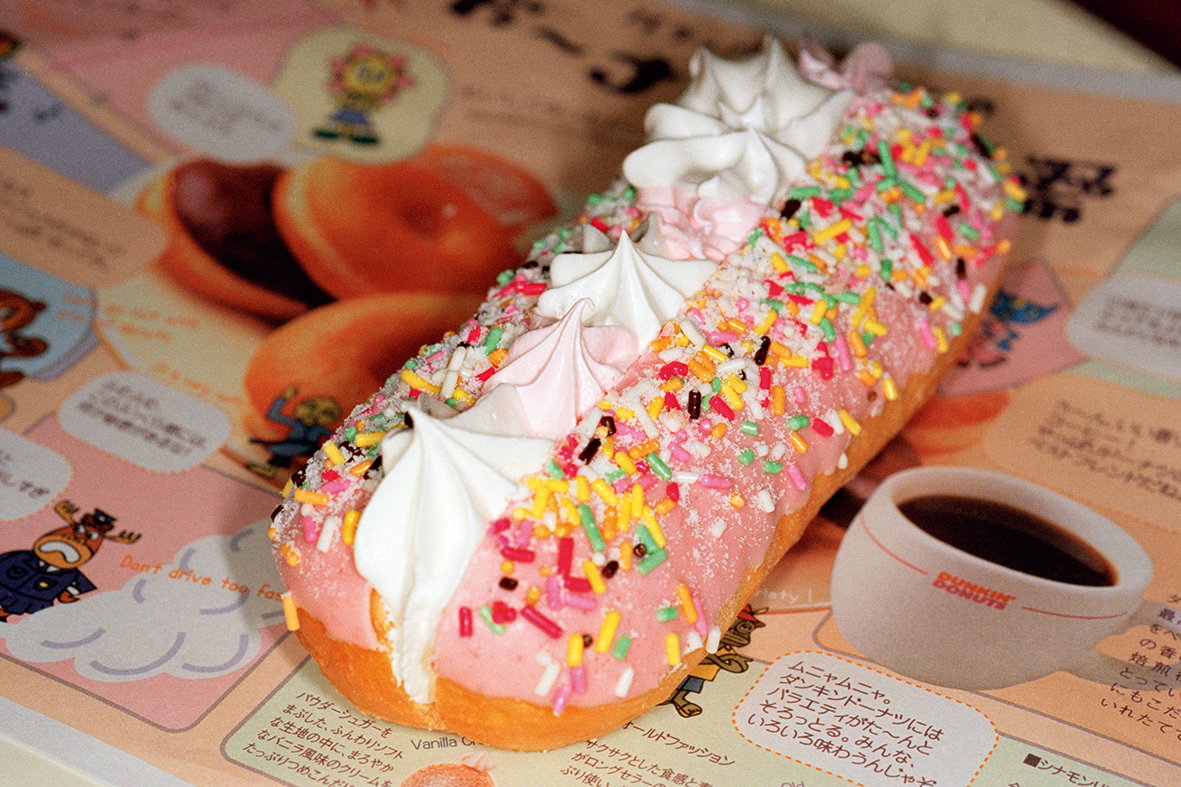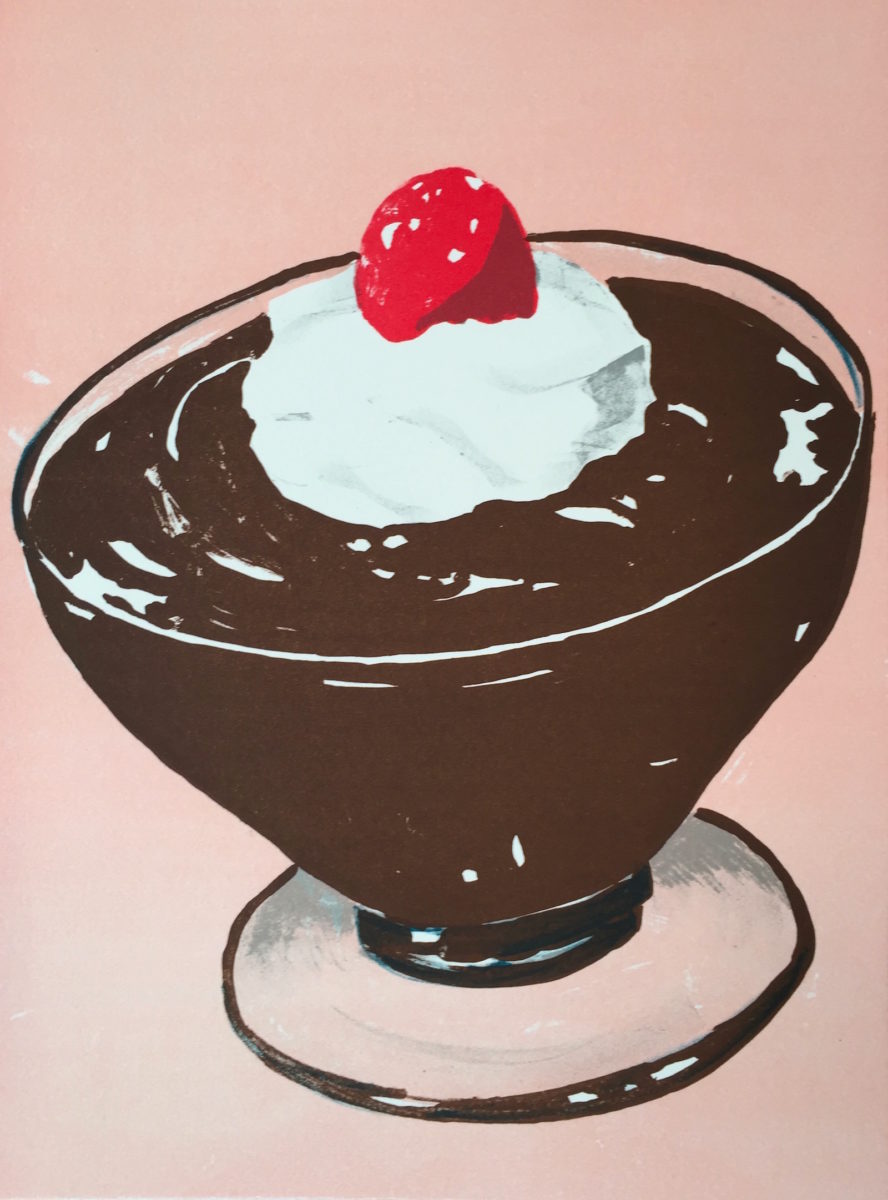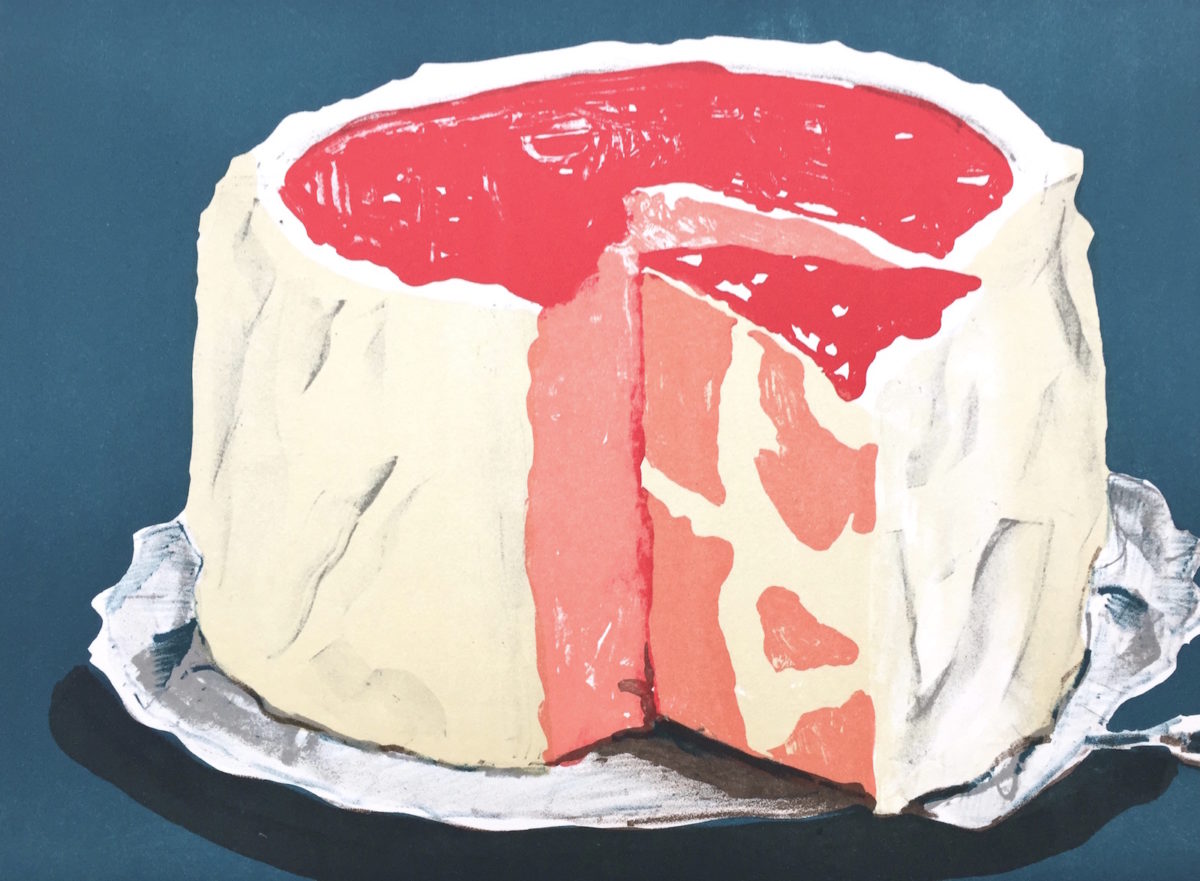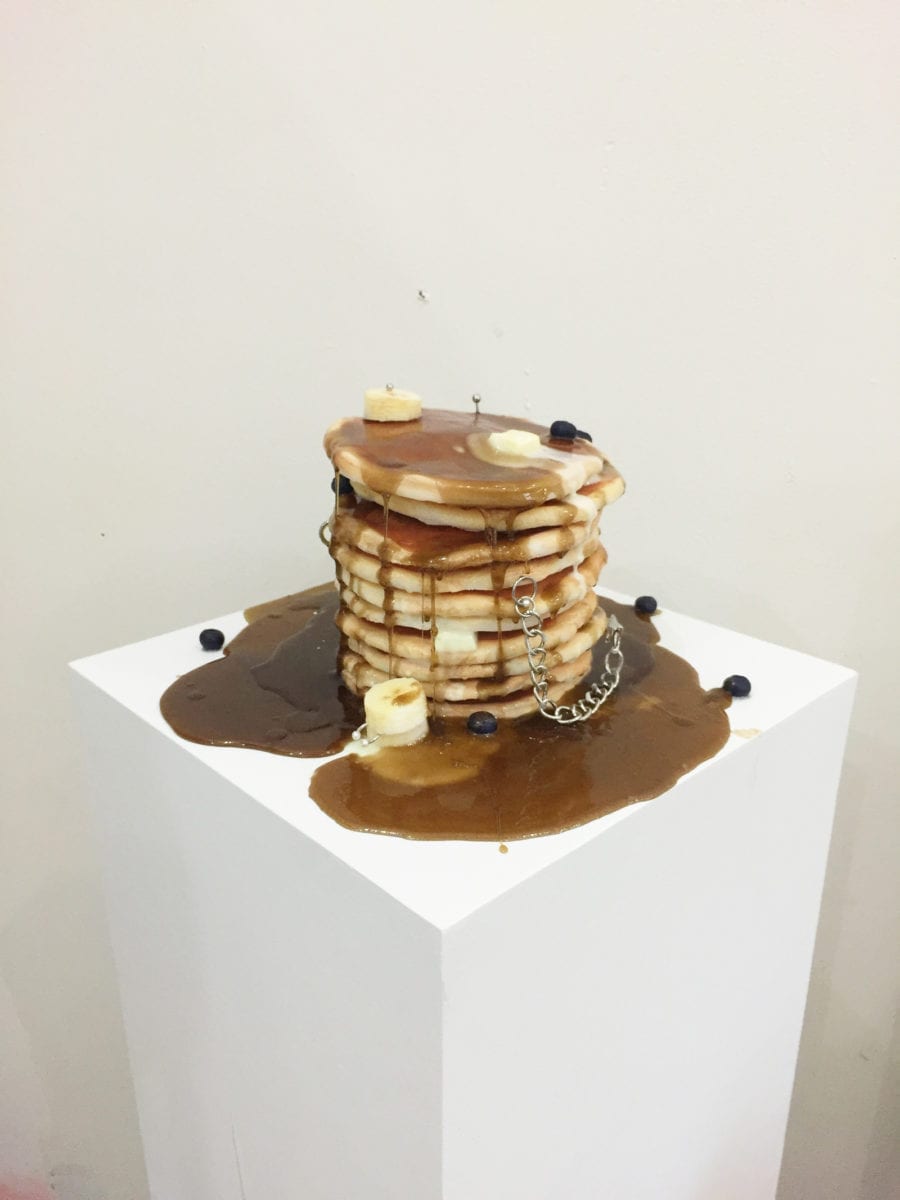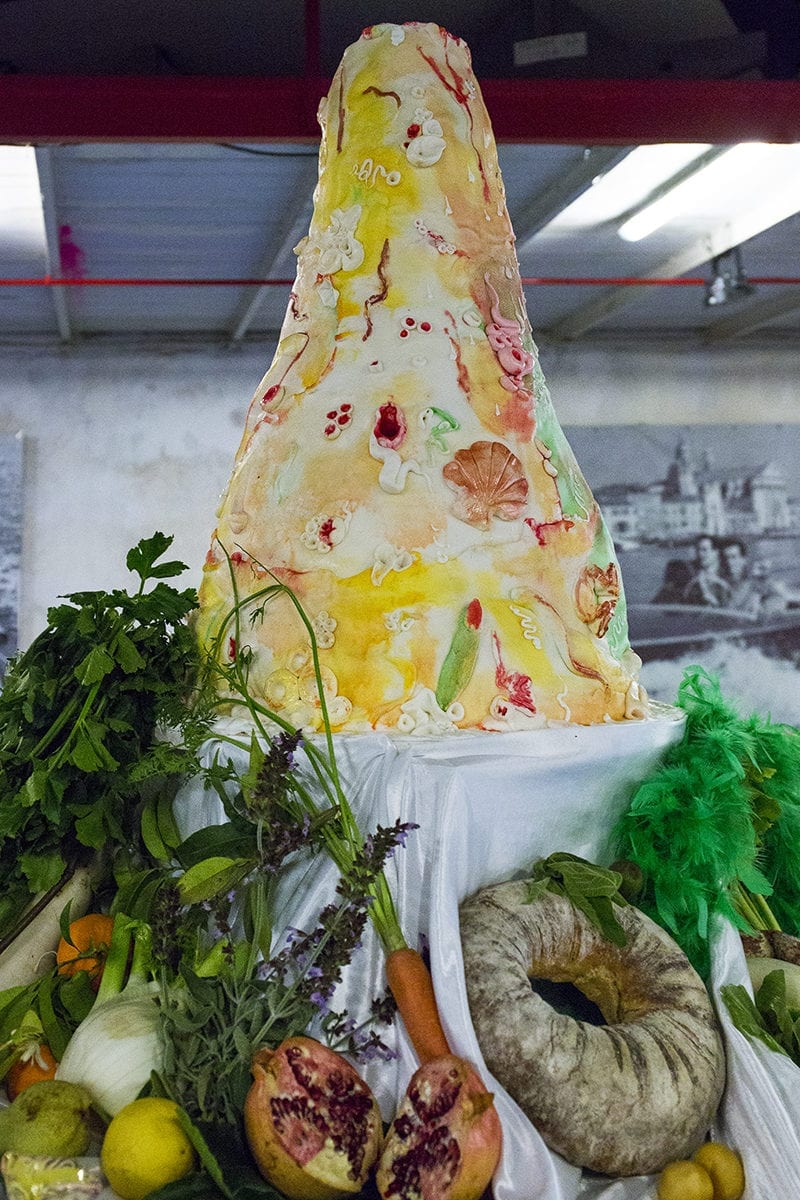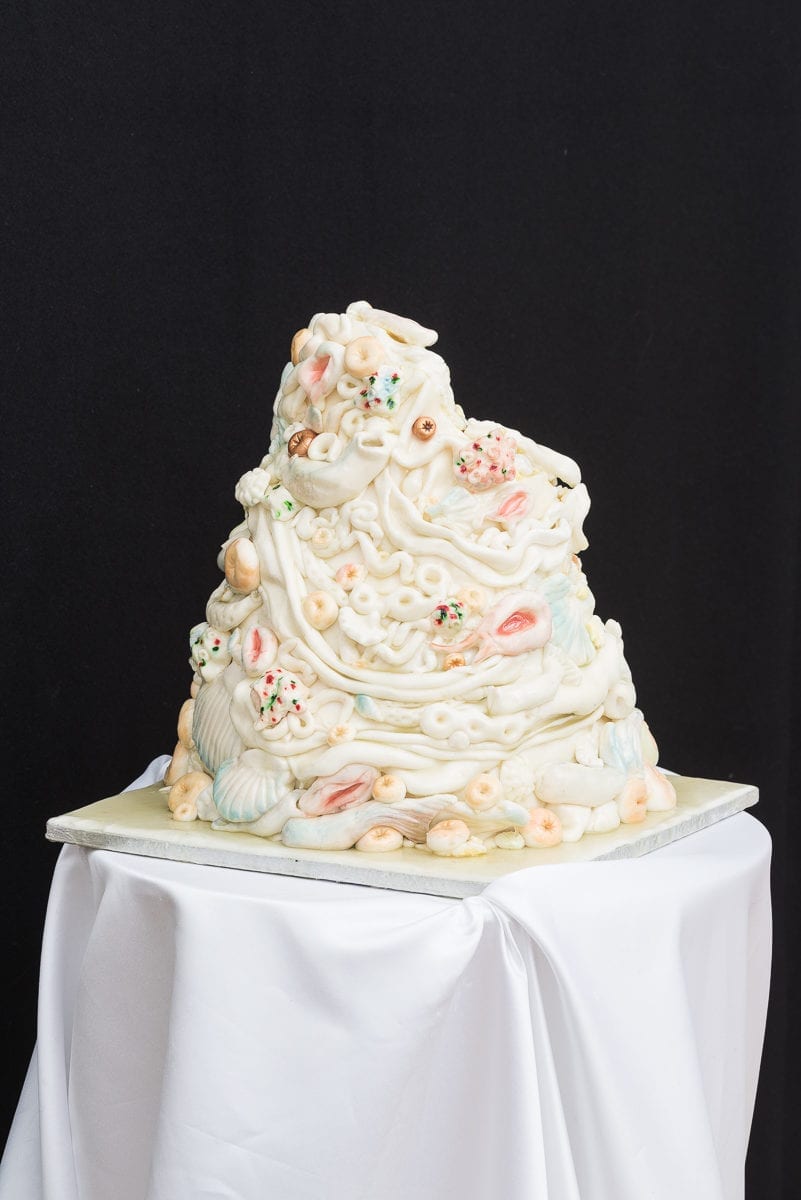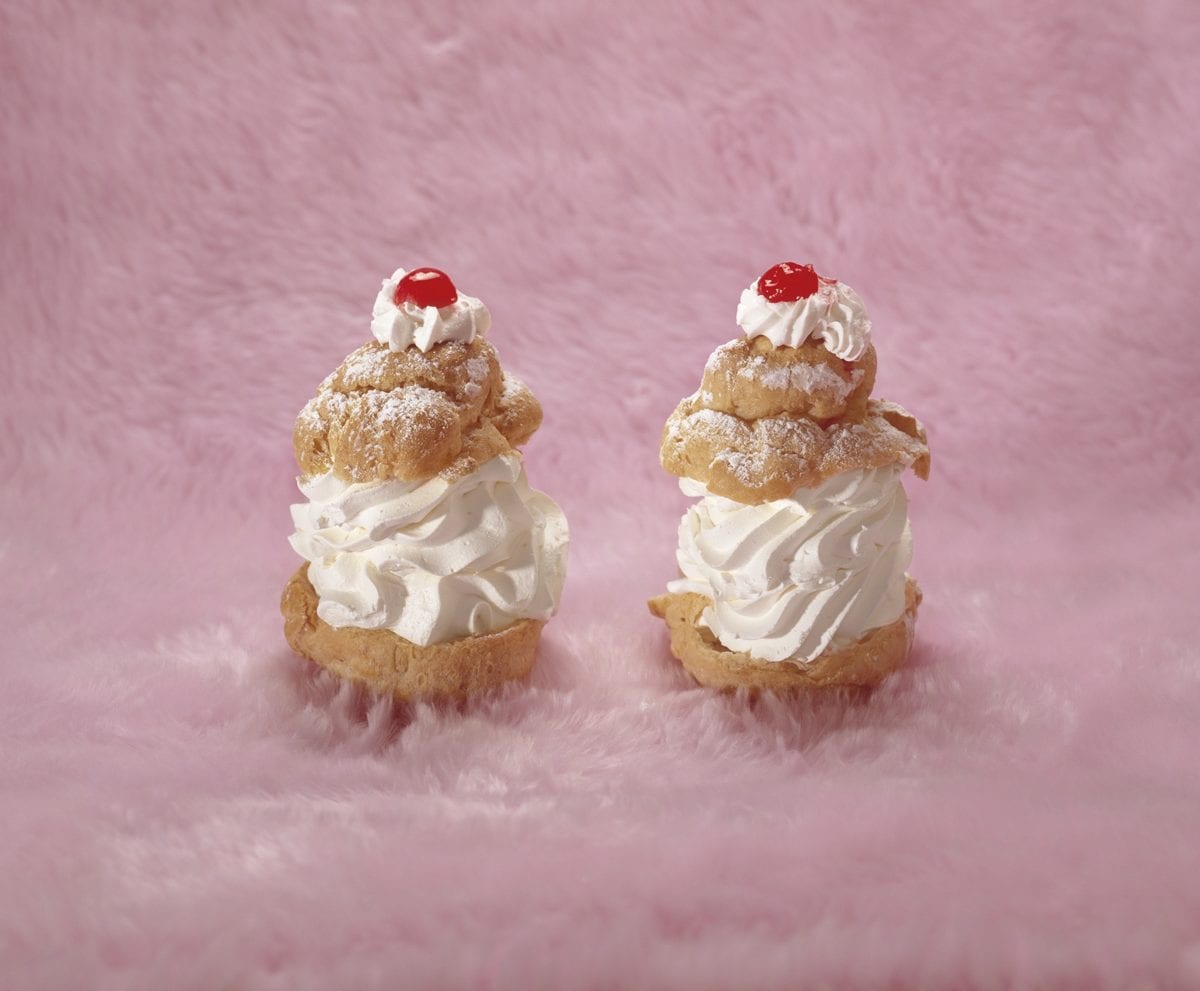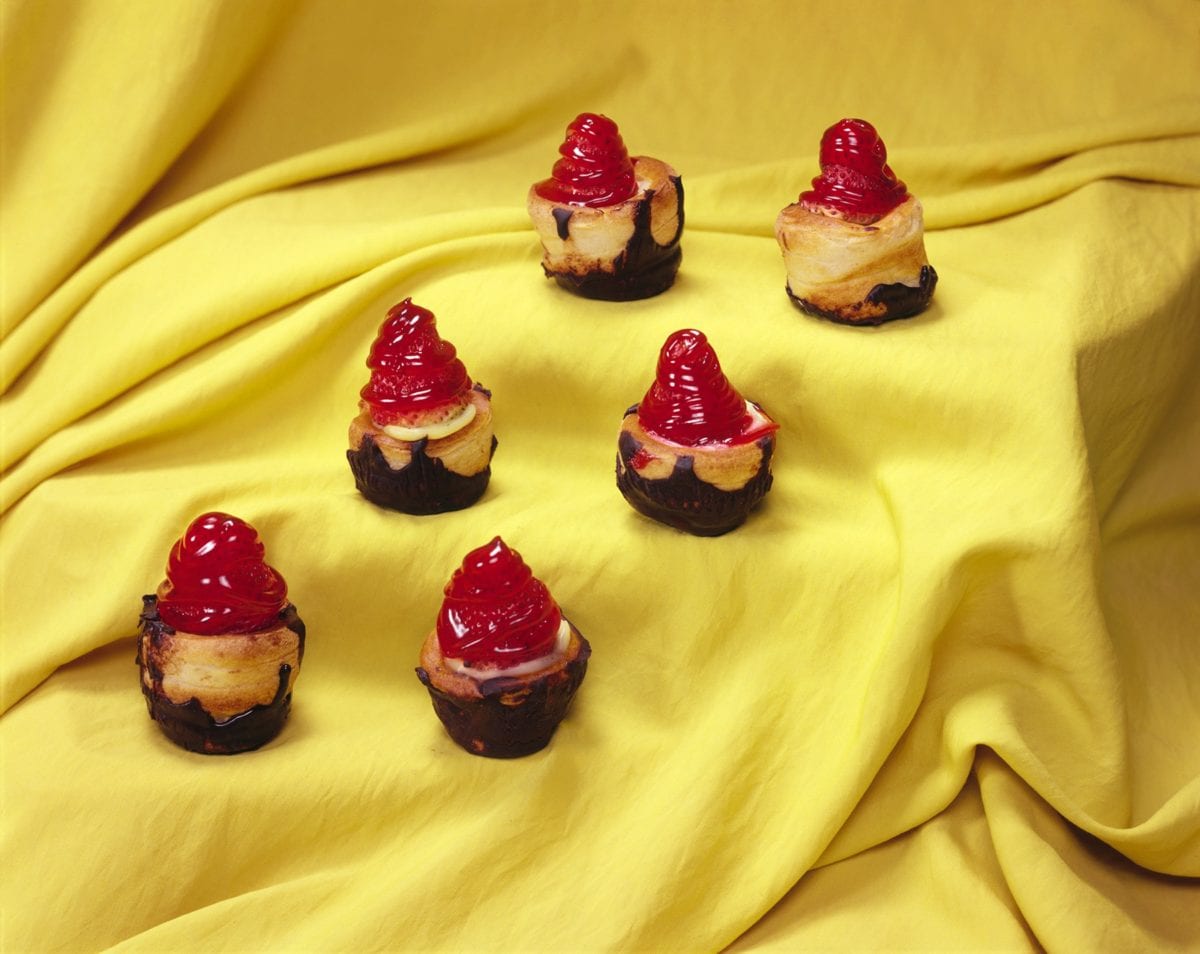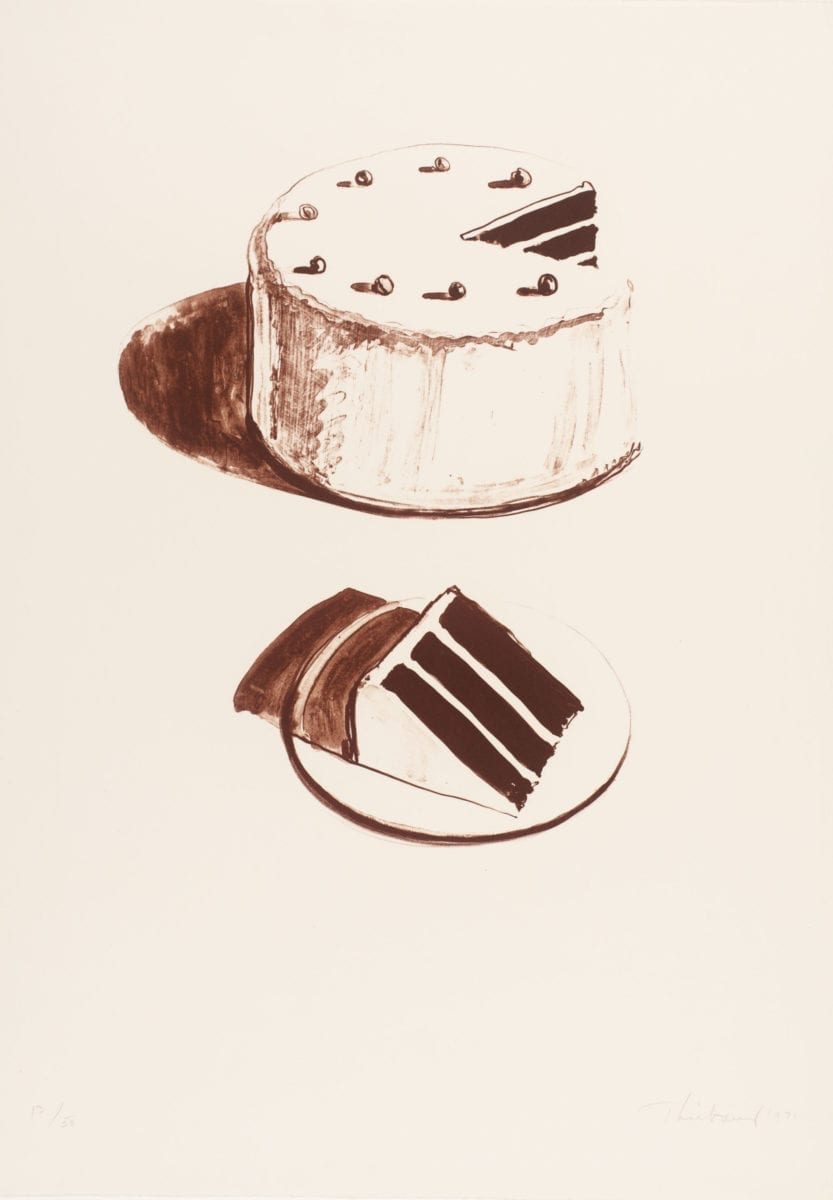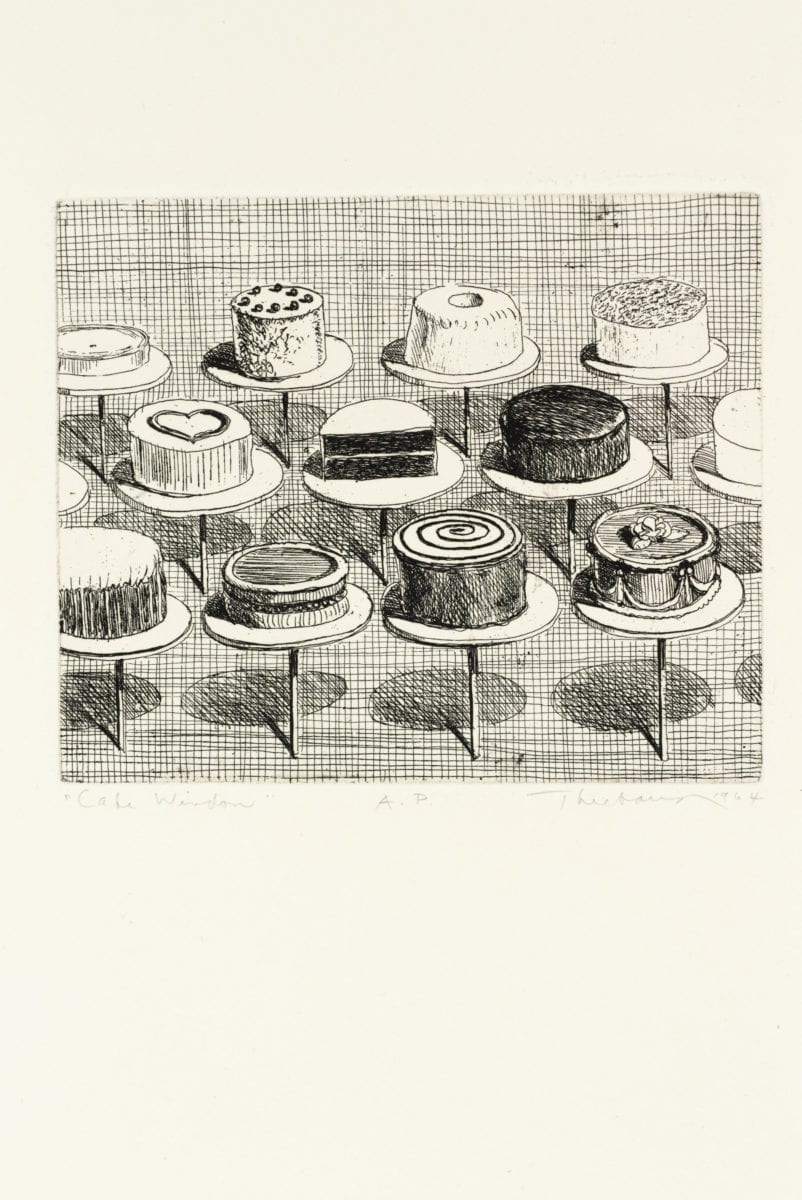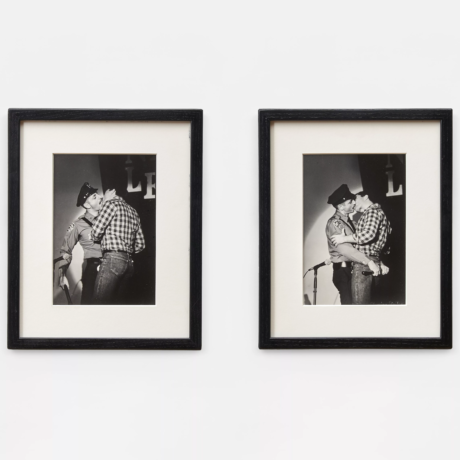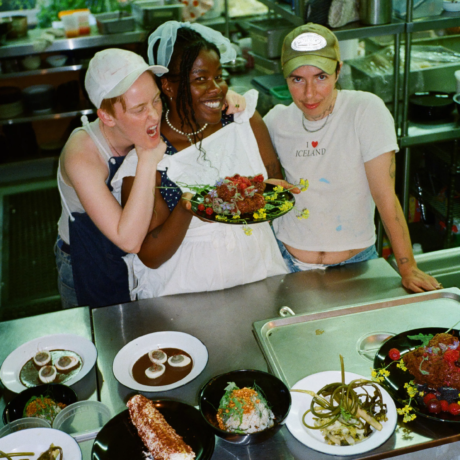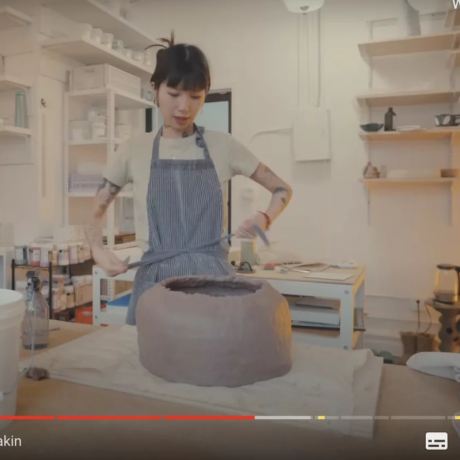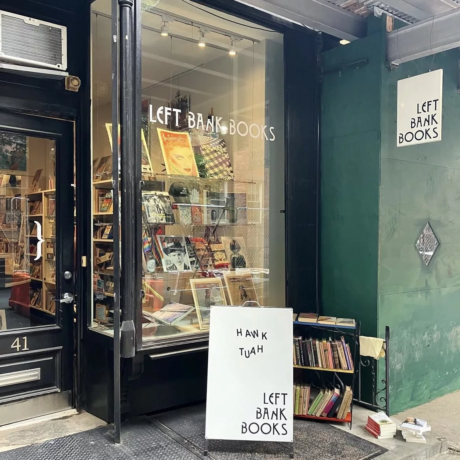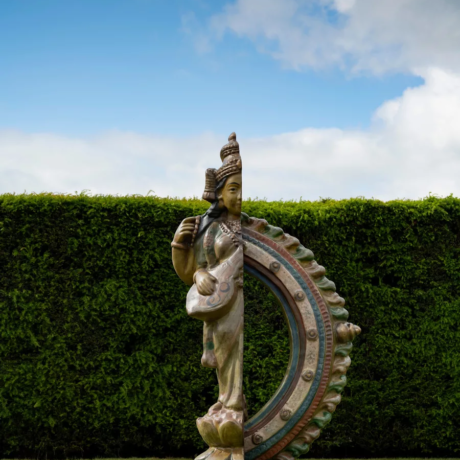Why do artists love dessert? The preeminent French painters of the 19th century were obsessed with puddings: Pierre Bonnard loved a good galette and Monet did a very fine tart. Desserts are the climax of a meal, and a lynchpin of culinary traditions. Andy Warhol was partial to the classic ice-cream cone (who can blame him) and in the same era, Don Nice immortalised another American icon, the donut. The king of the cake, however, has to be ninety-eight-year-old American artist Wayne Thiebaud—whose unmistakable cakes can be seen on permanent display in Tate Britain’s Prints & Drawing Room. Thiebaud’s fastidious documents of desserts in all their shapes, sizes and seemingly endless variety have continued over seven decades.
“Desserts can veer into the garish, driving us to consume in excess”
Desserts clearly carry more meaning than first appeals to the eye—and the stomach. Take the frothy cream that oozes erotically from Jo Ann Callis’s buns; the carbs stacked high in sculpted pancakes by Chloe Wise; or the nostalgic delight of Marcel van Eeden’s catalogue of desserts, from mousse to trifle to iced, baked perfection. Desserts play to our primitive senses; they tug on our heartstrings and beg us to abandon the straight road. They are also infinitely aesthetic, a masterful union of the visual and the appetite.
Desserts can veer into the garish, driving us to consume in excess—this sense of overload explodes in Zoe Williams’s performative cakes; buttery, creamy, gooey, too much-ness. In Martin Parr’s Real Food, an exploration of glorious additive-loaded gluttony around the world, he constantly treads the line between admiration and revulsion, eating with his eyes but then feeling a little queasy. As always with Parr, food is always a kind of socioeconomic commentary, a rumination on culture, class and our ideas about taste.
“Common objects,” Thiebaud once said, “become strangely uncommon when removed from their context and ordinary ways of being seen.” When artists do dessert it isn’t only for the pleasure of consuming calorie-free—underpinning all of these works is the reminder that we want we shouldn’t have, but also that our simplest pleasures are close to home. We are lascivious, base, gluttonous creatures who would sooner have our cake, and eat it—lots of it.
